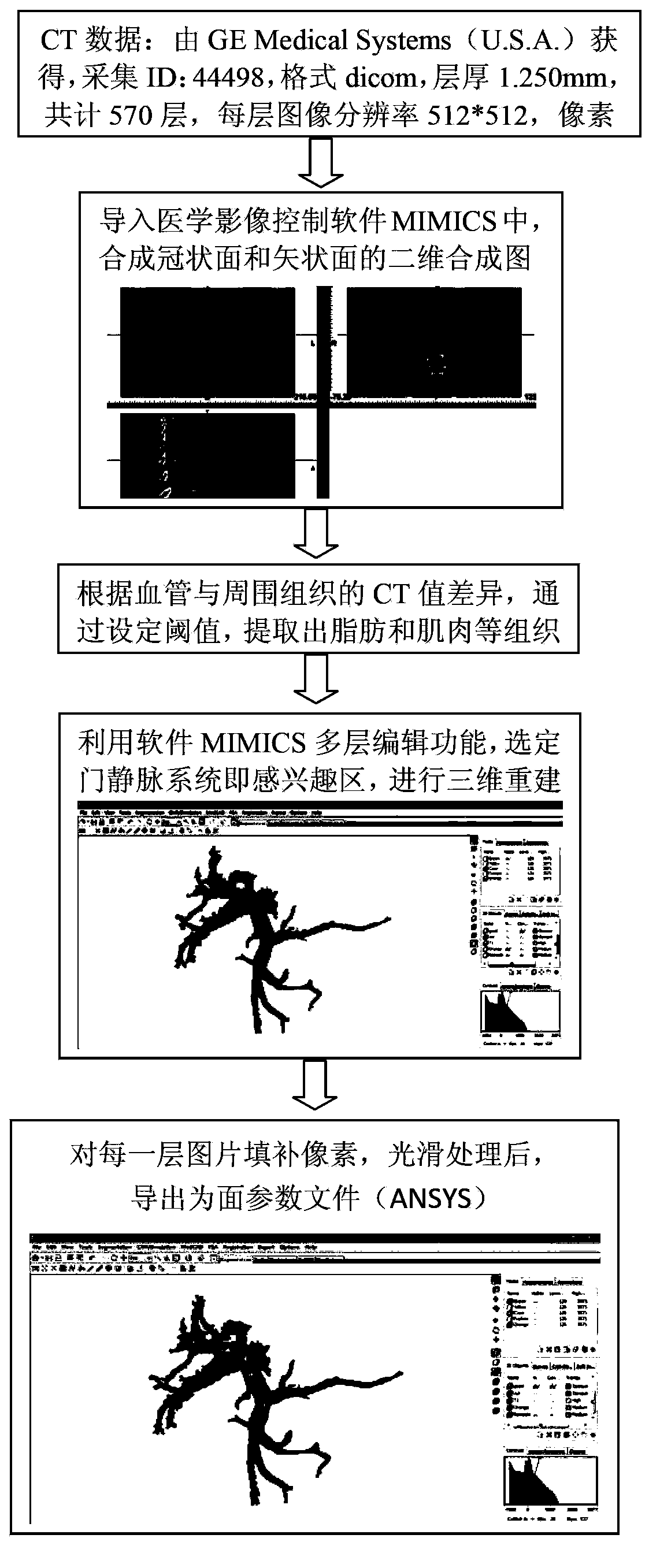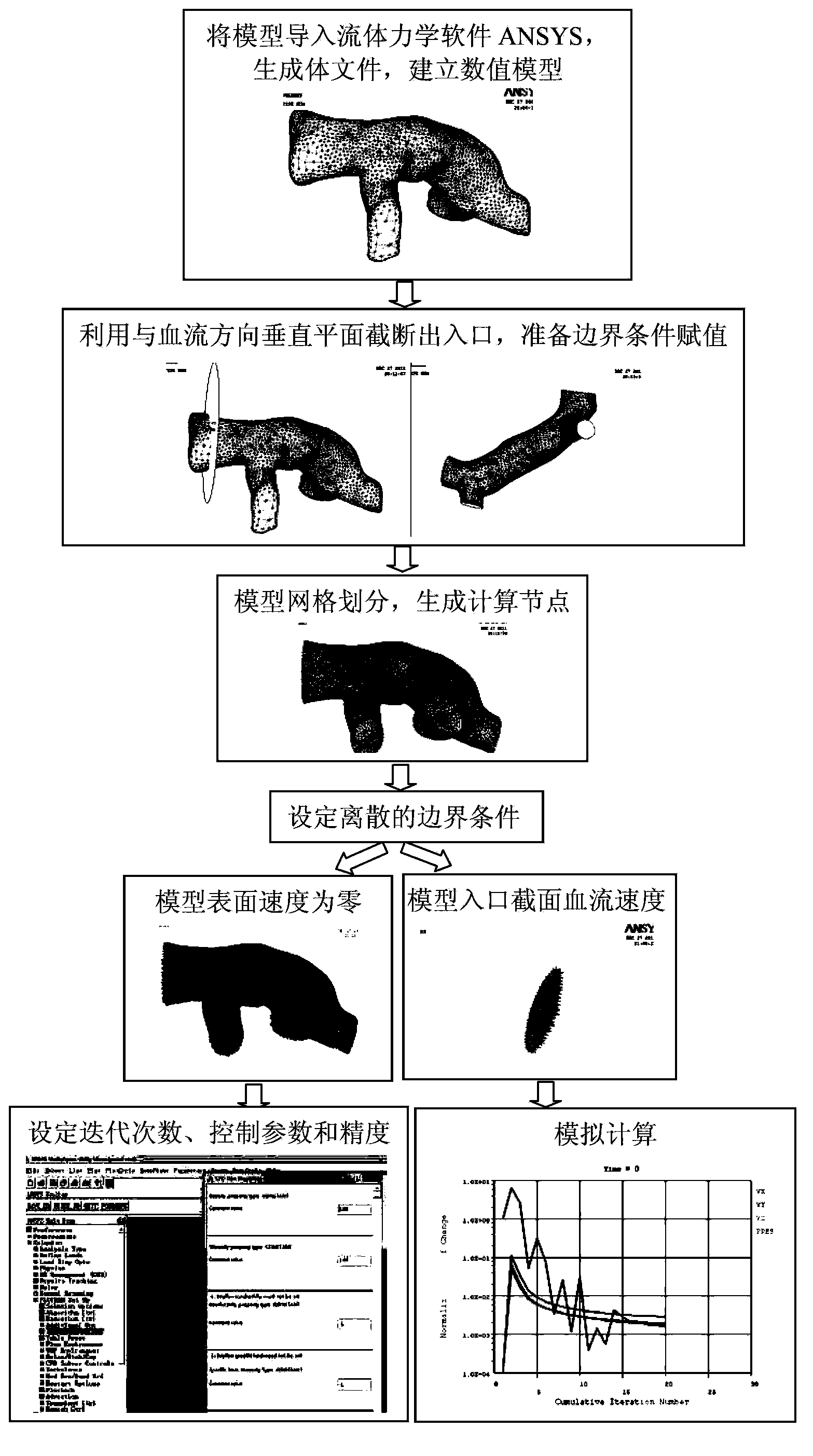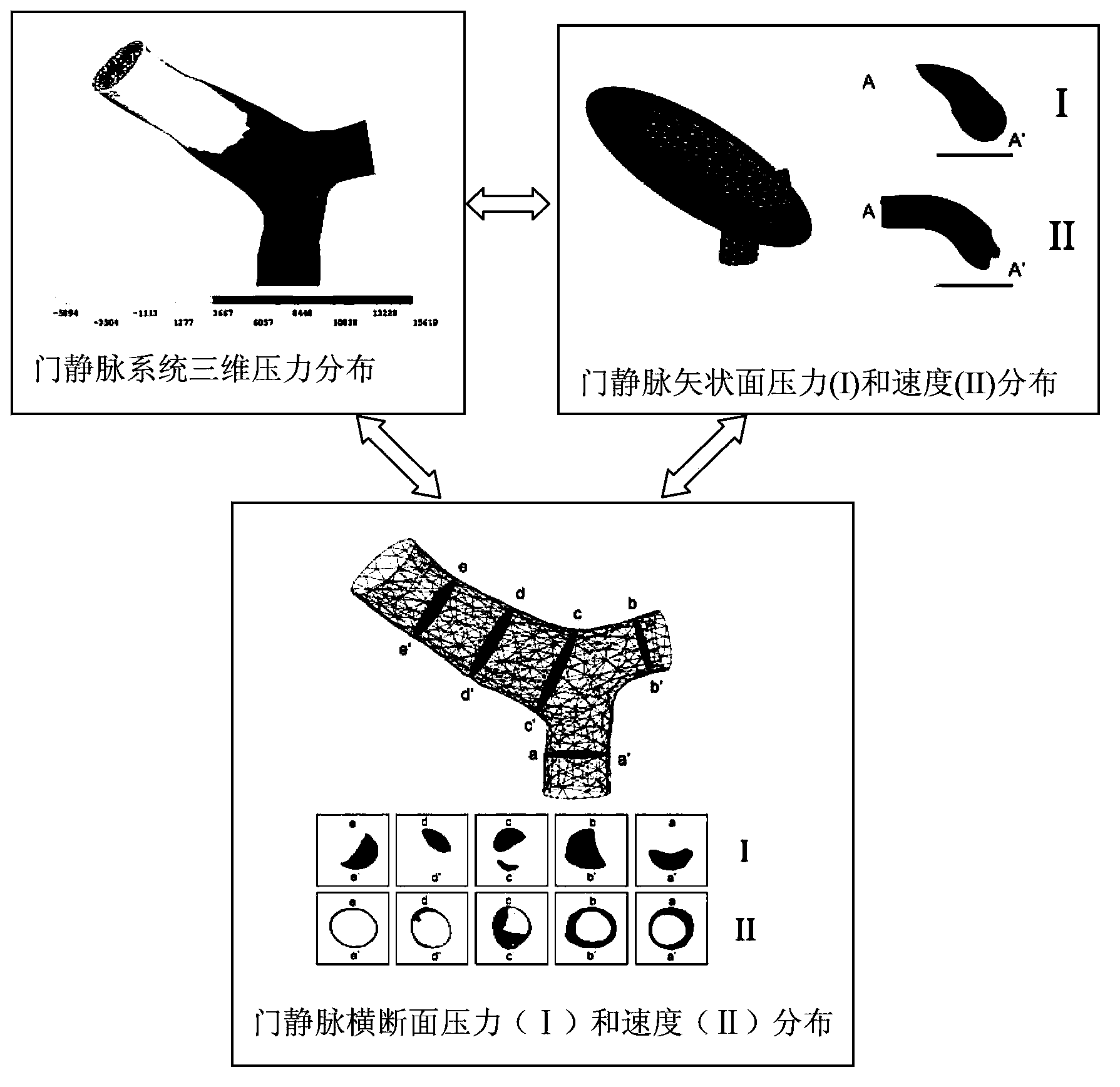Noninvasive portal vein hemodynamic parameter measuring method
A technology of fluid dynamics and venous blood, applied in the fields of physiology, pathophysiology and clinical medicine, it can solve the problems of limited research scope, unestablished pressure distribution of portal venous system, and inability to directly quantitatively evaluate hemodynamic parameters.
- Summary
- Abstract
- Description
- Claims
- Application Information
AI Technical Summary
Problems solved by technology
Method used
Image
Examples
Embodiment 1
[0057] Embodiment 1 establishes a geometric model
[0058] The enhanced CT images collected in the GE Medical Systems working platform were exported to dicom format, with a layer thickness of 1.250 mm, a total of 570 layers, an image resolution of 512 pixels × 512 pixels, and a pixel size of 0.797 mm. The picture is imported into the medical image control software MIMICS, and the software automatically calculates and generates a composite map of the two-dimensional plane (coronal plane, sagittal plane) of the portal vein system. According to the difference in CT values between blood vessels and surrounding tissues, through threshold setting, tissues such as fat and muscle are extracted, and then the research scope is limited to obtain a preliminary three-dimensional model of the portal vein. Because the portal vein and its branches are difficult to separate directly from the surrounding tissues in the three-dimensional model, the MIMICS multi-layer editing operation was used...
Embodiment 2
[0059] Embodiment 2 establishes a mathematical model
[0060] Import the geometric model into the Flotran module of the fluid mechanics calculation software ANSYS, generate the volume file, and establish the numerical model. Use a plane perpendicular to the blood flow direction to intercept the blood vessel model to obtain the inlet and outlet. According to the finite element idea, the three-dimensional tetrahedron element is used to divide the mesh inside the blood vessel, with a total of 848,432 meshes and 150,796 computational nodes. In order to obtain the pressure and velocity distribution of the portal vein system, the three-dimensional vascular model is subjected to local mesh refinement to improve the calculation accuracy. Then, discrete initial boundary conditions were set: 1. The blood flow velocity at the vessel wall was 0 cm / s; 2. The main portal vein velocity was 15.8 cm / s; 3. The end pressure of the vessel outlet was 10 mmHg. Then, given the control parameters r...
Embodiment 3
[0061] Example 3 Acquisition and Analysis of Velocity and Pressure Profiles
[0062] After the calculation of the Flotran module of ANSYS is completed, the overall effect map of the velocity and pressure of the three-dimensional portal vein and its branches can be obtained. It can be seen that the pressure value of the portal venous system gradually decreases from the lower inlet (the superior mesenteric vein and splenic vein) to the upper outlet (the end of the portal vein enters the liver). Since the present invention is an in vitro simulation technology, it can rotate at multiple angles and observe the pressure distribution. In addition, we use the sagittal section perpendicular to the portal vein to obtain the velocity and pressure distribution map inside the vessel. Velocity distribution hints: from the confluence of the portal vein to the liver, the blood flow velocity gradually increases due to the narrowing of the vessel diameter; the velocity of the outer wall of the...
PUM
 Login to View More
Login to View More Abstract
Description
Claims
Application Information
 Login to View More
Login to View More - R&D
- Intellectual Property
- Life Sciences
- Materials
- Tech Scout
- Unparalleled Data Quality
- Higher Quality Content
- 60% Fewer Hallucinations
Browse by: Latest US Patents, China's latest patents, Technical Efficacy Thesaurus, Application Domain, Technology Topic, Popular Technical Reports.
© 2025 PatSnap. All rights reserved.Legal|Privacy policy|Modern Slavery Act Transparency Statement|Sitemap|About US| Contact US: help@patsnap.com



